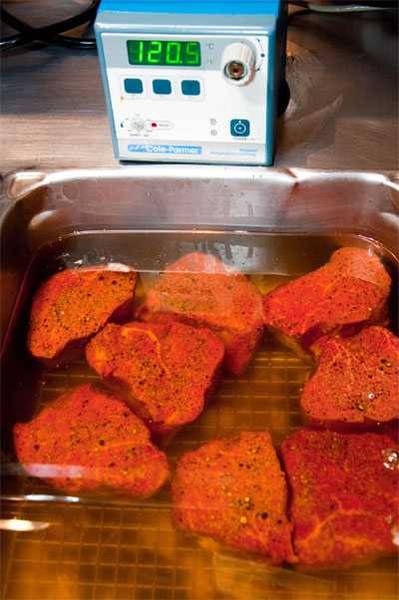Butter gets even better when it is clarified, especially when using for high heat cooking.
All my life I have sought clarity. Here is how I found it.
Butter is made by churning milk fat. It is a mix of oil, water, and milk solids. Many butters have salt added and are labeled “salted”.
Sometimes, when cooking, one wants the flavor of butter, but not the water, especially when frying or sautéing. That water will keep the temperature of the oil down until the water bubbles, foams, and boils off, not good for frying. Then the milk solids turn brown and eventually black. Butter burns at about 250°F (121°C).
But if you clarify the butter, if you remove the water and milk solids, you raise the smoke point to about 400°F (204°C), so you can cook with it over higher heat before it breaks down and turns brown. Clarified butter, also called drawn butter, can be kept in a tight jar at room temp and you can buy it in some stores. I have never seen it go rancid.
Ghee is a form of clarified butter that has had the water evaporated but it is cooked a bit longer with the milk solids so they caramelize and develop a nutty flavor. Sometimes it is even flavored with spices. Ghee easily found in Indian groceries.
Above, we see steaks warming in clarified butter at Stripsteak in the Mandalay Bay Hotel in Las Vegas. For more about their unique method of preparing incredible steaks, read my article Extreme Steak.
Makes:
3/4 cupTakes:
Ingredients
- 2 sticks unsalted butter (1/2 cup (112g) per stick)
These recipes were created in US Customary measurements and the conversion to metric is being done by calculations. They should be accurate, but it is possible there could be an error. If you find one, please let us know in the comments at the bottom of the page
Method
- Prep. Cut the butter into cubes and put it into a bowl. Microwave for 2 to 3 minutes until melted, or put it in a pan over low heat and melt it completely.
- Put it into the freezer for about 30 minutes or the fridge for about an hour until it solidifies again.
- It will separate into three layers, a thin layer of white milk solids at the top, a lemon colored layer of clarified butter, and a thin bottom layer of more solids and water. Scrape off the top layer and save it in plastic wrap or wax paper. You can use this top layer on popcorn or bread. Mark Bittman of the New York Times says “I sometimes add it to pancake batters or pasta-like doughs such as wrappers for pierogi.”
- Now run a butter knife around the sides of the bowl and loosen the waxy disk of clarified butter. There will probably be a little water at the bottom. Discard it, and pat the water off the bottom of the butter with a paper towel. Melt it again in the microwave and pour it into a very clean jar.
- To make ghee, simply brown the milk solids before straining into a very clean jar.



High quality websites are expensive to run. If you help us, we’ll pay you back bigtime with an ad-free experience and a lot of freebies!
Millions come to AmazingRibs.com every month for high quality tested recipes, tips on technique, science, mythbusting, product reviews, and inspiration. But it is expensive to run a website with more than 2,000 pages and we don’t have a big corporate partner to subsidize us.
Our most important source of sustenance is people who join our Pitmaster Club. But please don’t think of it as a donation. Members get MANY great benefits. We block all third-party ads, we give members free ebooks, magazines, interviews, webinars, more recipes, a monthly sweepstakes with prizes worth up to $2,000, discounts on products, and best of all a community of like-minded cooks free of flame wars. Click below to see all the benefits, take a free 30 day trial, and help keep this site alive.
Post comments and questions below
1) Please try the search box at the top of every page before you ask for help.
2) Try to post your question to the appropriate page.
3) Tell us everything we need to know to help such as the type of cooker and thermometer. Dial thermometers are often off by as much as 50°F so if you are not using a good digital thermometer we probably can’t help you with time and temp questions. Please read this article about thermometers.
4) If you are a member of the Pitmaster Club, your comments login is probably different.
5) Posts with links in them may not appear immediately.
Moderators